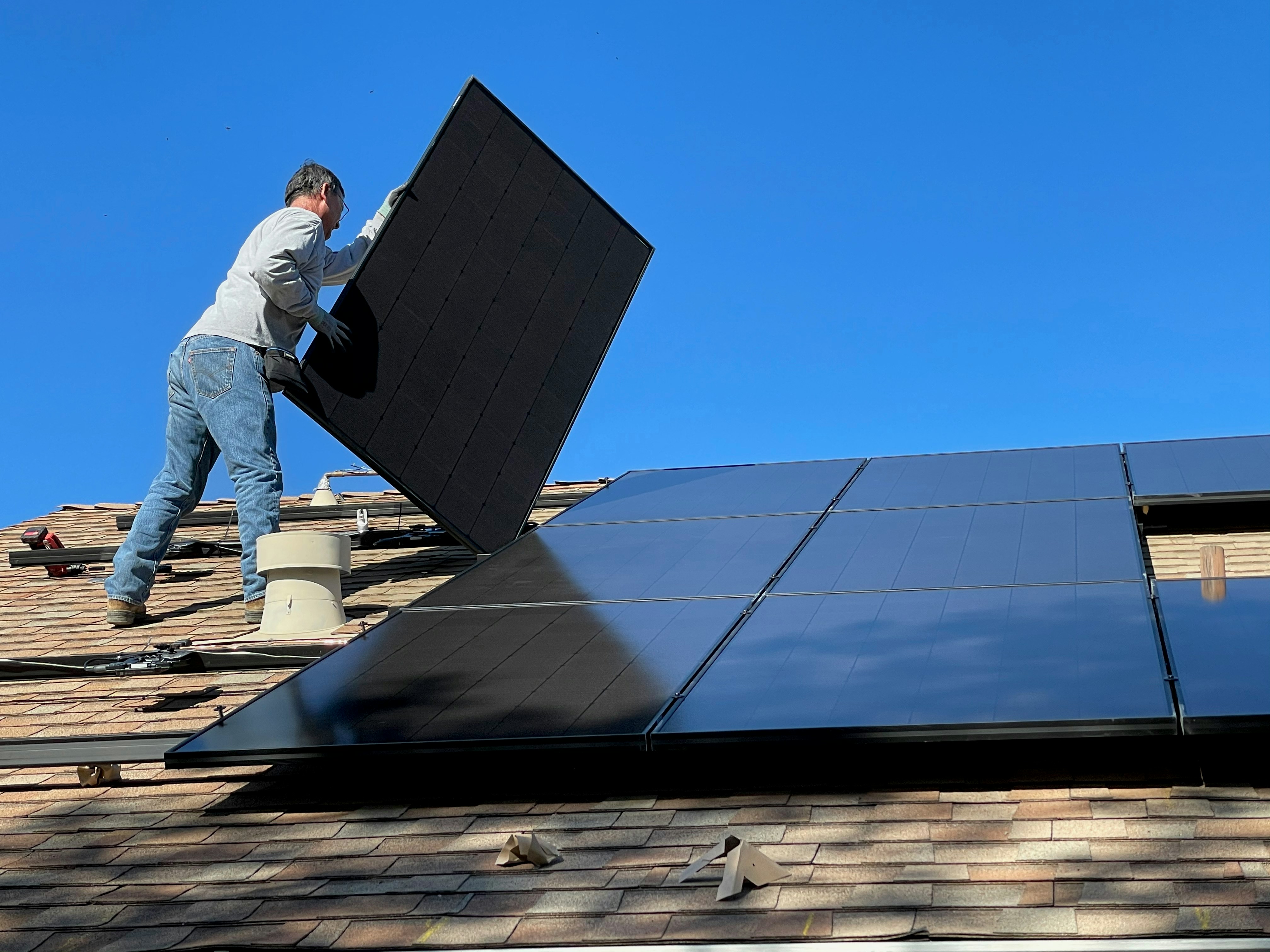
Custom Home Design Strategies for Future Family Needs
Designing a custom home that fits your family's future needs is more important than ever. Many families don’t realize that their space should be both functional and adaptable as life changes. This article will cover five essential strategies, including understanding your family's needs and selecting a flexible home design. By engaging with this content, readers will discover practical solutions for creating a living space that grows with them, addressing concerns about future adjustments and family dynamics. With expert insights, families can build a home that truly meets their evolving lifestyle.
Key Takeaways
Custom homes should reflect current family dynamics and future lifestyle changes.
Planning for accessibility ensures comfort for all family members as they age.
Flexible spaces adapt to growing family needs and changing activities over time.
Energy-efficient systems contribute to long-term savings and environmental sustainability.
Collaborating with experienced professionals leads to a tailored and functional living space.
Understanding Your Family's Current and Future Needs

Considering the size and lifestyle of a family is a blessing when designing a custom home. Attention must be paid to the specific needs of each family member, as these can vary significantly. Evaluating potential life changes, like children growing up or aging parents, is vital for future space requirements. Planning for age-related accessibility enhances mobility, making the home comfortable for all stages of life.
Assess the Size and Lifestyle of Your Family
When assessing the size and lifestyle of a family, it is crucial to reflect on both current dynamics and future aspirations. Families may experience changes, such as children moving into new bedrooms or aging loved ones needing adapted spaces, which brings to light the need for flexible designs. A well-thought-out approach ensures that the home can cope with evolving circumstances, leading to a harmonious living environment that prioritizes the truth of family life.
Consider Specific Needs for Different Family Members
When designing a custom home, addressing the specific needs of each family member becomes crucial. For a husband who may work from home, incorporating a quiet office space can provide the necessary environment for productivity. A single parent might prioritize open areas that foster family connection while also considering the fear of having space that can accommodate future needs as children grow. This tailored approach ensures that everyone feels comfortable and valued in their living space, making the home truly functional for all.
Evaluate Potential Life Changes That May Impact Space Requirements
Evaluating potential life changes that may impact space requirements is essential when designing a custom home. Consider upcoming milestones such as marriage or the arrival of a new boyfriend who may need their own space, as well as the possibility of caring for an aging mother. Anticipating these changes allows families to create flexible spaces that can adapt over time and accommodate growing needs, ensuring that the home remains a sanctuary for all members.
Plan for Age-Related Accessibility and Mobility
Planning for age-related accessibility and mobility is vital when creating a custom home that serves all family members, especially as they grow older. Features such as wider doorways, lever-style door handles, and step-free entrances can significantly reduce stress and frustration as mobility needs change. Integrating these thoughtful design elements reflects a commitment to caring for each individual's needs, allowing family members to live comfortably without feeling confined by aggression or anger stemming from physical limits.
Selecting a Flexible Home Design

To create a custom home that adapts to a family's evolving needs, several strategies are key. Open floor plans can offer versatile living spaces that encourage interaction. Additionally, multi-functional rooms provide flexibility as family dynamics change. Choosing walls and partitions that can be modified accentuates the focus on the family, allowing for growth without sacrificing comfort and functionality.
Explore Open Floor Plans for Versatile Living Spaces
Open floor plans provide an excellent way for families to enhance their living spaces while allowing for flexibility as future needs arise. For a father working from home, an open layout fosters a seamless connection between work and family life, helping to alleviate the pain of isolation. This setup can also encourage romance and bonding during family gatherings, creating an inviting atmosphere for monthly celebrations and special occasions.
Encourages family interaction and connection.
Accommodates different activities, from work to play.
Allows for easy adjustments as needs change.
Maximizes space efficiency and flow.
Creates a warm and welcoming environment.
Incorporate Multi-Functional Rooms That Adapt Over Time
Incorporating multi-functional rooms that adapt over time is a smart approach for families desiring a home that meets their evolving needs. Such spaces can transform based on daily activities, allowing parents to create a playroom that doubles as a quiet study area or a guest room that can transform into a cozy den. This flexibility not only optimizes energy use within the home but also alleviates feelings of sadness associated with a lack of space, providing motivation for families to thrive together.
Choose Walls and Partitions That Can Be Modified
Choosing walls and partitions that can be modified plays a crucial role in creating a custom home that reflects the family's evolving needs. Such designs not only promote empathy by addressing diverse family dynamics but also add a soulful quality to the living space. For instance, using movable partitions allows rooms to shift in purpose, ensuring that the home can easily adapt to changes, whether it’s a growing family or changing lifestyles.
Prioritizing Sustainability and Efficiency

Investing in energy-efficient appliances and systems is an essential step in designing a custom home that meets future needs. Understanding the benefits of sustainable building materials enhances durability and reduces environmental impact. Moreover, planning for future energy needs and potential upgrades ensures the home remains adaptable and efficient over time. Each of these strategies plays a vital role in creating a comfortable and eco-friendly living space.
Invest in Energy-Efficient Appliances and Systems
Investing in energy-efficient appliances and systems is a smart decision when designing a custom home that meets a family’s future needs. These appliances not only reduce energy consumption but also contribute to significant savings over time, making them a practical choice for budget-conscious families. By selecting products with high ENERGY STAR ratings, homeowners can ensure their home is equipped with modern technology that aligns with sustainability goals.
This transition to energy-efficient solutions also enhances the overall comfort of the home, creating an environment that supports both health and lifestyle. For instance, upgrading to high-efficiency heating and cooling systems can regulate indoor temperatures effectively, contributing to a pleasant living space regardless of the season. Understanding the long-term benefits of such investments empowers families to make informed choices that resonate with their values and vision for the future.
Understand the Benefits of Sustainable Building Materials
Understanding the benefits of sustainable building materials is essential for families designing custom homes that aim for longevity and efficiency. These materials often reduce environmental impact while enhancing the durability and overall quality of the home. For example, using recycled materials or sustainably sourced wood can lower energy costs over time, making the home both eco-friendly and cost-effective in the long run.
Plan for Future Energy Needs and Potential Upgrades
Planning for future energy needs is crucial when designing a custom home, as it allows families to anticipate changes and upgrades that may be necessary down the line. By incorporating features such as additional electrical outlets for future appliances or pre-wiring for solar panel installations, homeowners can create a space that remains efficient and adaptable to their evolving requirements. This foresight ensures that the home not only meets current demands but also supports the family's long-term vision for sustainability and energy efficiency.
Ensuring Space for Growth and Expansion

Designing a custom home requires careful consideration of future family dynamics. Creating spaces that can accommodate new family members ensures everyone has room to grow. Developing outdoor areas fosters family activities, promoting connection and enjoyment. Planning for the potential addition of rooms or garages allows for flexibility, ensuring the home can evolve as the family's needs change over time.
Design Spaces That Can Accommodate New Family Members
Designing spaces that can accommodate new family members is essential for a custom home that evolves with a family's needs. Families often grow through marriage, children, or extended family living together, so having extra bedrooms or flexible rooms that can easily transition from a nursery to a guest room is beneficial. Planning well in advance ensures that everyone has their personal space, fostering a harmonious living environment.
Create Outdoor Areas That Allow for Extended Family Activities
Creating outdoor areas that facilitate extended family activities is essential for a custom home that adapts to future growth. Options such as patios, gardens, or play areas encourage gatherings and shared experiences, fostering connections among family members. By designing versatile spaces that can host everything from barbecues to family games, homeowners ensure their outdoor environments enhance quality time and accommodate a variety of activities as the family evolves.
Plan for Possible Addition of Rooms or Garages
Planning for the possible addition of rooms or garages is a smart strategy when designing a custom home. Families can anticipate future needs by ensuring that foundational designs support easy expansions. This foresight allows homeowners to adapt comfortably without major disruptions, keeping the home functional and inviting for everyone:
Consider a layout that facilitates garage expansion.
Ensure room foundations are strong enough for future growth.
Plan for potential design features to optimize added spaces.
Use flexible design elements that can accommodate changes over time.
Collaborating With Professionals for Tailored Solutions

Selecting the right professionals is key to designing a custom home that meets a family's future needs. Choosing architects and builders who specialize in custom designs ensures that the home is tailored to unique requirements. Working with interior designers helps create aesthetically pleasing yet functional spaces, while consulting with real estate experts offers valuable insights into suitable neighborhoods. Together, these strategies foster a cohesive approach to building a home that adapts over time.
Choose Architects and Builders Experienced in Custom Designs
Selecting experienced architects and builders for custom home designs is essential for creating a home that meets a family's future needs. Professionals specializing in custom builds bring valuable knowledge of efficient layouts, innovative materials, and adaptable features that ensure the design not only suits current preferences but also supports future changes as family dynamics evolve.
To make informed decisions, families should focus on professionals with a strong portfolio in residential projects emphasizing flexibility. Networking through local home shows or consultations can help identify the best candidates. By partnering with these experts, families lay the groundwork for a home that remains functional and welcoming for years to come, regardless of the changes ahead.
Work With Interior Designers for Functional Aesthetics
Working with interior designers is essential for creating a custom home that balances aesthetics with functionality. These professionals bring valuable insights into space planning and design elements that complement a family’s lifestyle. By incorporating specific needs from the start, such as creating cozy areas that foster connection or ensuring ample storage for growing families, an interior designer helps make the home truly adaptable and practical for the future.
Consult With Real Estate Experts for Neighborhood Insights
Consulting with real estate experts can significantly enhance the process of designing a custom home that meets a family's future needs. These professionals possess valuable insights into local neighborhoods, including information about schools, amenities, and potential for growth, which can impact long-term living satisfaction. By leveraging their expertise, families can make informed decisions about where to build, ensuring that their new home not only suits current preferences but also aligns with future lifestyle aspirations.
Incorporating Technology for a Modern Lifestyle

Integrating smart home features enhances convenience and security, making daily life easier for families. Planning for future technology upgrades ensures that the home remains modern and functional. Additionally, considering energy management systems contributes to efficiency, helping families save on costs. Each of these elements supports a seamless and adaptable living experience as needs change over time.
Integrate Smart Home Features for Convenience and Security
Integrating smart home features significantly enhances convenience and security for a family, allowing for seamless control over daily activities. For example, smart locks and security cameras provide peace of mind by enabling homeowners to monitor their property from afar, ensuring the safety of loved ones. Furthermore, automated lighting and climate control systems can adjust settings based on family routines, adding comfort while also increasing energy efficiency. This forward-thinking approach not only simplifies life today but also prepares families for future advancements in technology, making their custom home truly adaptable.
Consider Energy Management Systems for Efficiency
Considering energy management systems in a custom home design significantly enhances efficiency and reduces utility costs. These systems monitor and control energy use, allowing families to track their consumption patterns and make adjustments as needed. By incorporating smart devices that optimize heating, cooling, and lighting based on daily routines, families can ensure their home remains comfortable while saving money and energy over time.
Conclusion
Designing a custom home that adapts to a family's future involves strategic planning and thoughtful design choices. By understanding current and anticipated needs, including flexibility, accessibility, and sustainability, families can create spaces that evolve over time. Collaborating with professionals ensures tailored solutions that reflect unique lifestyles and preferences. Embracing these essential strategies positions families for long-term comfort and harmony in their living environments.


